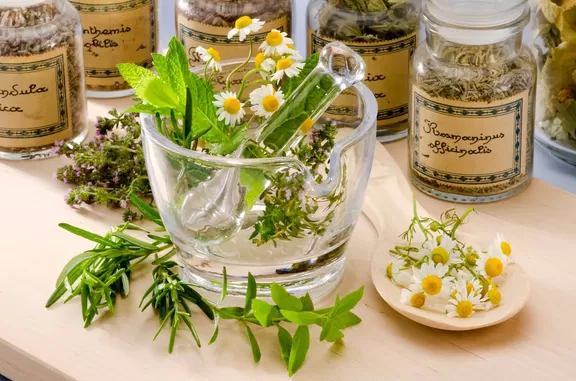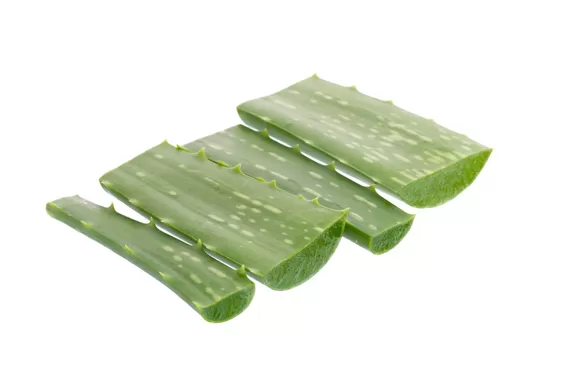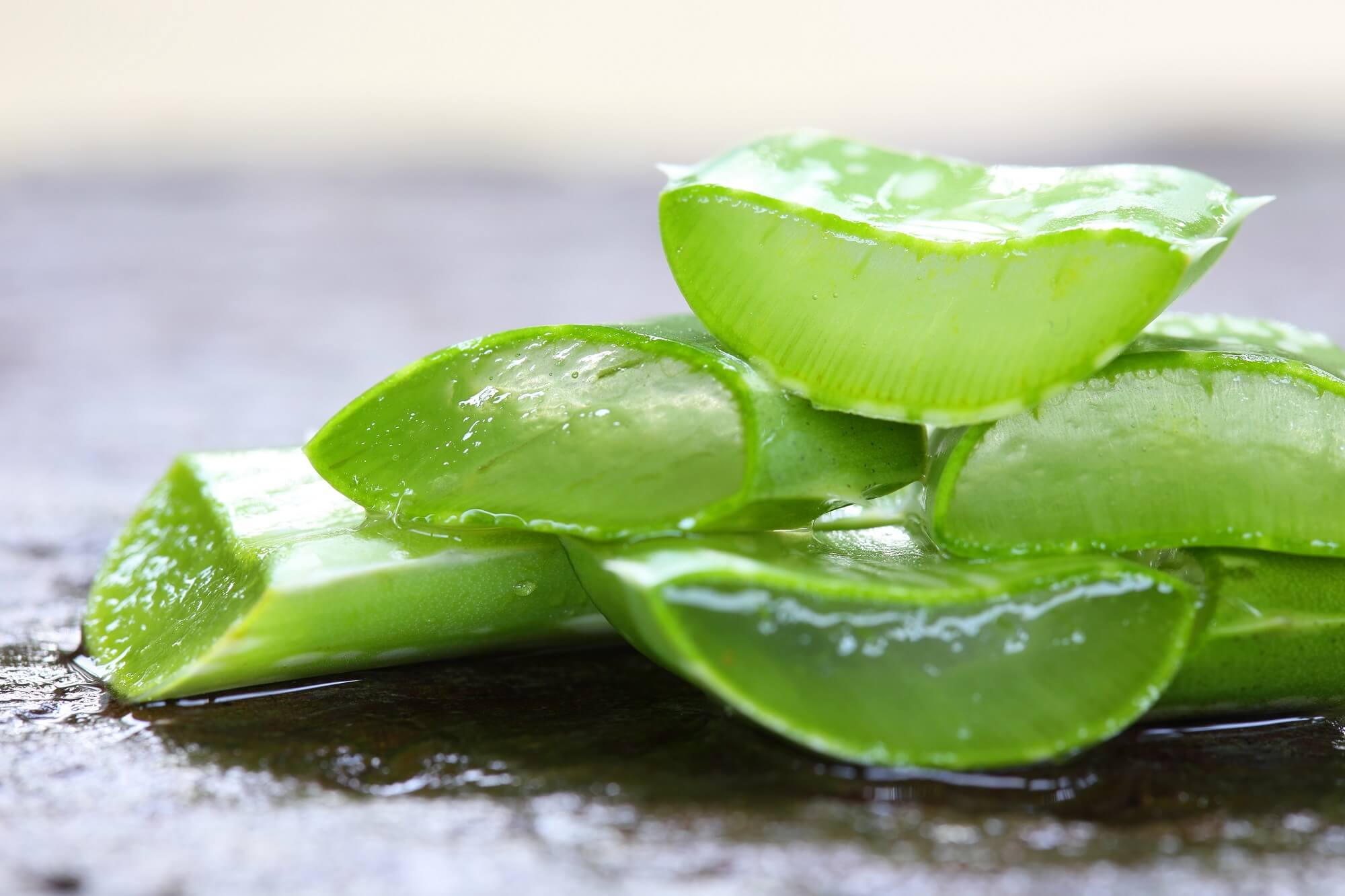
Aloe vera (Aloe barbadensis) is a capable herbal treatment for hemorrhoids. When topically applied, aloe can help reduce inflamed and swollen hemorrhoids while promoting the healing of existing rectal wounds. But, to make a more effective topical hemorrhoid treatment, consider pairing it up with other healing herbs like plantain and comfrey.
Internally, Aloe vera is probably one of the most quintessential herbs for cases of hemorrhoids with a causal factor of constipation. Aloe is a potent natural laxative, and should be used cautiously for this reason!
Dr. James A. Duke, in his book The Green Pharmacy,(source 1) cautions that you should not try and prepare your own Aloe vera laxative. This is because the inner part of the plant’s leaves are such a powerful laxative it could cause problems. Instead, Dr. Duke recommends buying a aloe vera juice product you can drink; these products won’t be as potent as raw aloe leaf juice!
The Indian Journal of Dermatology(source 2) also states that Aloe vera is a capable laxative. The study states aloe increases intestinal water content, increases intestinal peristalsis (involuntary constriction and relaxation of the muscles that creates movements to push the intestinal contents through the canal), and stimulates mucus secretion.
In addition to being a laxative, the same study also states this herb is a capable antimicrobial. The plant contains phenols, urea nitrogen, salicylic acid, lupeol, and sulfur. These compounds all have the ability to stop bacteria, fungi, and viruses. This may be a key reason why aloe can help assist with wound healing.
Because aloe can help both externally and internally with hemorrhoids; it is essential to consider this herb’s potential for hemorrhoids. It may be best to use aloe vera gel as a base substance to put other wound healing and anti-inflammatory herbs into. This combination may create a synergistic healing effect; giving you more relief. You can view more herbs to treat hemorrhoids on Herbsey’s hemorrhoid section.
Naturally Treat Hemorrhoids in 48 Hours
Jessica Wright’s unique 5-step, all-natural approach to hemorrhoid treatment delivers permanent relief. Heal hemorrhoids in 48 hours, and eliminate the root cause in 30 to 60 days.
Benefit from Jessica’s 12 years of research; her book is backed by a 60 day, 100% money back guarantee.

Aloe vera after Hemorrhoidectomy Surgery
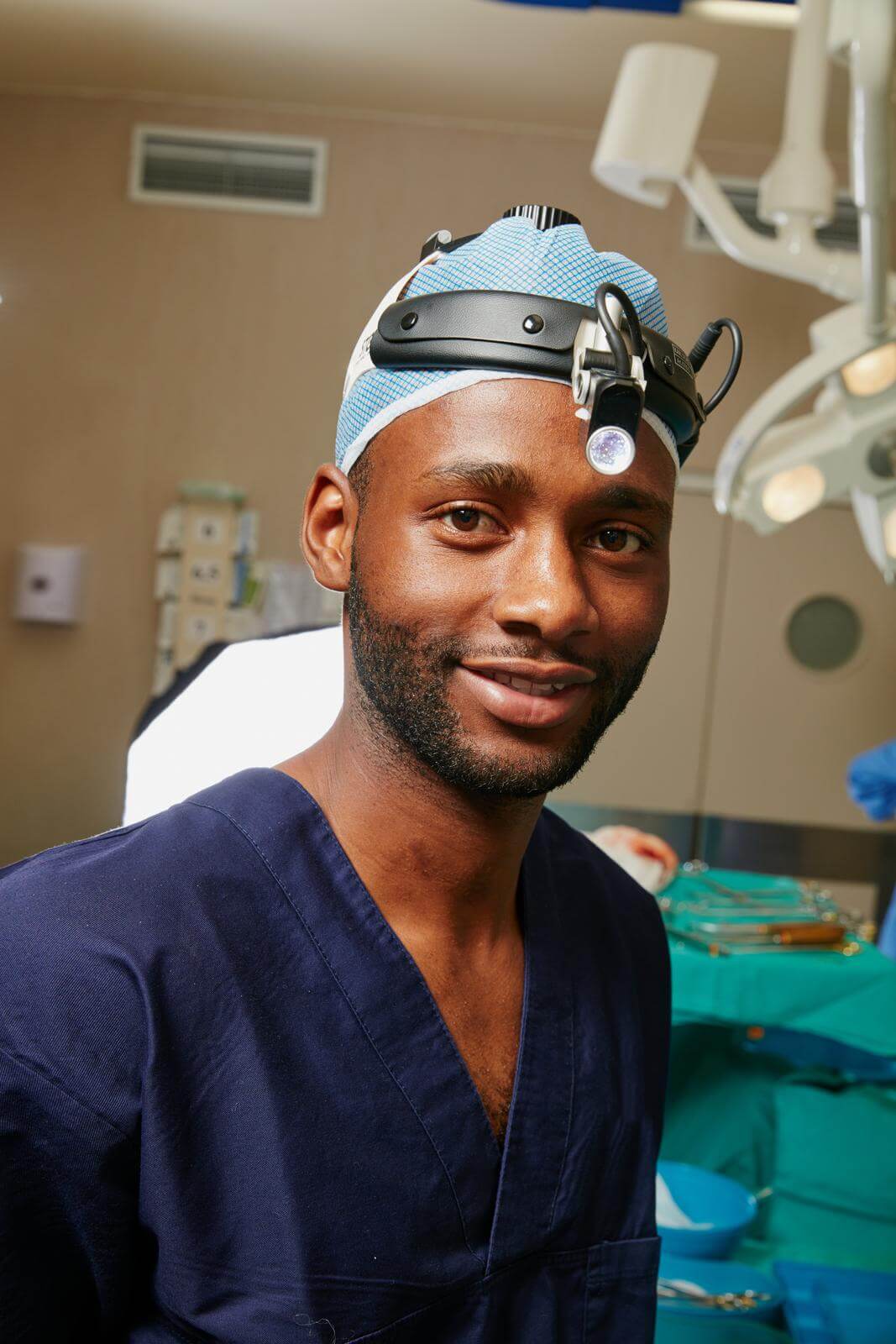
A 2010 study in The Journal of Alternative and Complementary Medicine(source 3) discussed how Aloe vera could be used after hemorrhoidectomy surgery to reduce post-operative pain, post-defecation pain, and how the herb would help with wound healing.
This study was a randomized, double-blind, placebo-controlled trial comparing the effects of a cream containing Aloe vera versus a placebo cream on post-hemorrhoidectomy pain. The study used a cream it synthesized that had Aloe vera powder added to it. The cream contained Aloe vera gel powder at a concentration of 0.5%. So, it appears not a very strong concentration of this herb was in the cream.
The placebo creams were synthesized according to a similar method without the addition of Aloe vera powder.
The study evaluated pain with a visual analog scale immediately postoperatively, at 12, 24, and 48 hours after surgery and at weeks 2 and 4. Wound healing was investigated and evaluated at the end of 2 and 4 weeks. The study also noted the use of pain relieving drugs (analgesics).
The study allocated 24 patients to use the Aloe vera cream and 25 patients to use the placebo. The experiment revealed that those taking aloe had significantly less postoperative pain at 12, 24, and 48 hours after surgery and at the following 2 week mark. Aloe vera also lessened pain after defecation at 24 and 48 hours after surgery.
Interestingly, wound healing was significantly better in the patients using the Aloe vera cream at the end of the second postoperative week.
The study stated that inflammation is one of the primary causes of pain after surgery; and, because of the anti-inflammatory effects of aloe, this helps to relieve pain. Aloe is also antimicrobial; the effect is related to the anthraquinones, aloe-emodin, and other phytochemicals (plant chemicals) in this herb. The study speculated that the antimicrobial action of aloe could be a reason why wound healing is improved and pain is reduced.
The study concluded that aloe does help after hemorrhoidectomy surgery. The authors made the following conclusion:
Application of Aloe vera cream on the surgical site is effective in reducing postoperative pain both on resting and during defecation, healing time, and analgesic requirements in the patients compared with the placebo group.
The Journal of Alternative and Complementary Medicine [16.6 (2010): 647-650]
Samuel Bart’s Digestive Health Solution
Samuel Bart has always been passionate about plants and their ability to keep us healthy. He has put together some of the best natural ways that could help anyone support a healthy digestive system.
Samuel perfected an easy, yet powerful formula, which consists of amazing ingredients. Bart’s supplement is backed by a ironclad 60-day, money back guarantee.

Aloe Vera is Anti-Inflammatory & Reduces Swelling
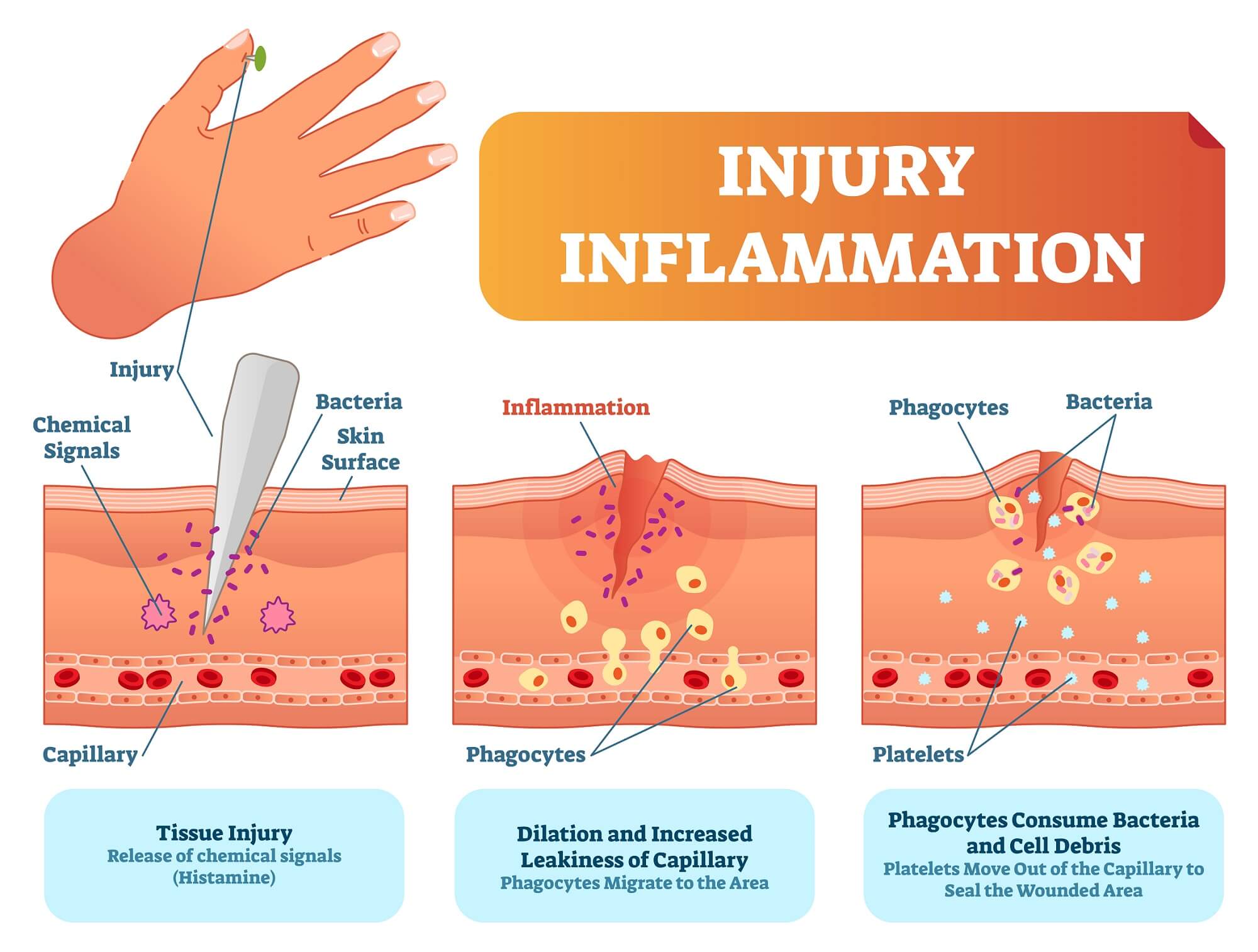
A 2019 study in Annals of Gastroenterology(source 4) discussed why anti-inflammatory suppositories are used in hemorrhoids. The rationale behind using them is that bleeding is a direct result of inflammation; and, inflammation can contribute to pain and irritation of the perianal skin (skin around the anus).
Edema (abnormal swelling) is a primary sign of inflammation. A 2021 book entitled Infections and Sepsis Development(source 5) explains the link between the inflammatory response and edema.
According to this book, after an injury, inflammatory mediators cause reactions in the damaged area. Some of the inflammatory compounds are interleukins, tumor necrosis factor-alpha (TNF-α), compounds made from (metabolites of) arachidonic acid, vasodilators, and nitric oxide. Excessive production of these inflammatory agents cause edema and an increased sensitivity to feeling pain (hyperalgesia).
Inflammation is a natural response to pathogens and tissue damage which involves cells and blood vessels. Immune cells cause the release of the aforementioned inflammatory mediators. Normally, the inflammatory response is natural and beneficial; but, it can become harmful when it is prolonged. Edema is linked to inflammation because edema is a cardinal sign of inflammation.
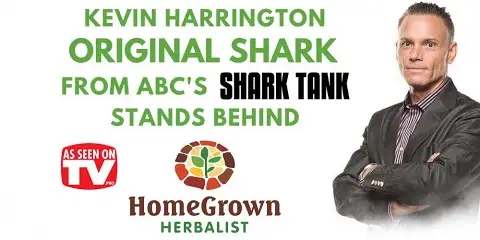
Comprehensive Herbalist School
Dr. Patrick Jones, founder of the HomeGrown Herbalist School of Botanical Medicine has been a practicing veterinarian for over 25 years. He is also a clinical herbalist and traditional naturopath.
Kevin Harrington, Original Shark from ABC’s Shark Tank, stands behind Dr. Patrick Jones and HomeGrown Herbalist.
Learn More
Comprehensive Herbalist School
Dr. Patrick Jones, founder of the HomeGrown Herbalist School of Botanical Medicine has been a practicing veterinarian for over 25 years. He is also a clinical herbalist and traditional naturopath.
Kevin Harrington, Original Shark from ABC’s Shark Tank, stands behind Dr. Patrick Jones and HomeGrown Herbalist.Learn More
A 1996 study in the Journal of Ethnopharmacology(source 6) demonstrated that Aloe vera extract could stop inflammation and edema. The study looked at how water, ethanol (drinking alcohol), and chloroform extracts of Aloe vera would affect inflammation and edema in rats. To do this, edema was induced in rat paws. Next, different amounts of the extracts were injected into the body cavities of the rats. The anti-inflammatory activity of the extracts was evaluated by the degree edema was reduced.
The study found the water and chloroform Aloe vera extracts reduced the inflammation / edema induced in the rats as well as mitigated the number of neutrophils (a type of white blood cell) migrating into the peritoneal cavity (space within the abdomen that contains the intestines, the stomach, and the liver).
Yet, the ethanol extract did not decrease the inflammation / edema; it only reduced the amount of neutrophils.
Of importance is that the water extract inhibited prostaglandin E2 production from arachidonic acid. This suggested that prostaglandin production was reduced by the inhibition of cyclooxygenase. Discussing this in the conclusion, the study states the following:
In summary, we have demonstrated that the aqueous, chloroform extracts of Aloe vera gel showed an inhibitory effect on carrageenan-induced edema and that the aqueous extract inhibited the production of PGE2 in vitro. These effects suggest an inhibitory action on the arachidonic acid pathway via cyclooxygenase. Based on the results of this study, we came to the conclusion that the Aloe vera gel has potential antiinflammatory activity, and thus provides a scientific basis for the utilization of this plant in folk medicine for the treatment of inflammatory processes.
Journal of Ethnopharmacology [55.1 (1996): 69-75]
How Neutrophils & Prostaglandin Induce Inflammation
Neutrophils have a key presence in the early stages of inflammation and lay a groundwork for tissue repair by macrophages (specialized cells involved in the detection and destruction of harmful entities). These processes are conducted via many cytokines (certain substances produced by certain cells of the immune system and have an effect on other cells) and the expression of their receptors.(source 7)
Neutrophils are responsible for starting the reparative process later managed by macrophages. Yet, in the event of excessive inflammation, providing a therapeutic balance between limiting inflammation and stimulating repair is important.(source 7)
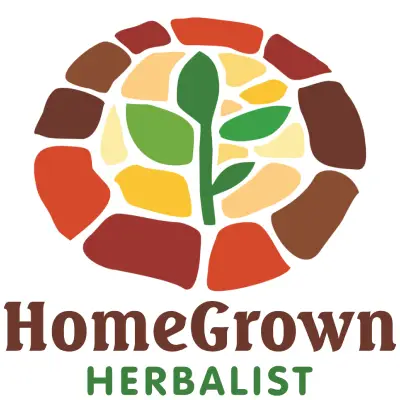
HomeGrown Herbalist Herb Shoppe
Owner of HomeGrown Herbalist Dr. Patrick Jones is a practicing veterinarian, Clinical Herbalist, and traditional naturopath. He owns and operates Fairview Animal Hospital in Buhl, ID.
Their herb shoppe provides herbs, essential oils, and tools. If you have some time, check it out!
Learn More
HomeGrown Herbalist Herb Shoppe
Owner of HomeGrown Herbalist Dr. Patrick Jones is a practicing veterinarian, Clinical Herbalist, and traditional naturopath. He owns and operates Fairview Animal Hospital in Buhl, ID.
Their herb shoppe provides herbs, essential oils, and tools. If you have some time, check it out!Learn More
Relevant to inflammation, cyclooxygenase-2 is an enzyme that is expressed in response to inflammatory stimuli. It catalyzes the formation of prostaglandins (lipid compounds in the body having hormone-like effects) that mediate pain and support the inflammatory process.(source 8)(source 9)
The biosynthesis of prostaglandins is blocked by nonsteroidal anti-inflammatory drugs (NSAIDs). Despite the blocking by NSAIDs, prostaglandins might be able to promote and resolve inflammation. Prostaglandins have a key role in creating an inflammatory response.(source 9)
Prostaglandin E2 is one of the most typical lipid mediators produced from arachidonic acid by the enzyme cyclooxygenase, and acts on four kinds of receptor subtypes to produce several actions including pain sensation, inflammation, and elevated body temperature.(source 10)
A 2020 study(source 11) stated that the glycoproteins in Aloe vera extract have been demonstrated to inhibit cyclooxygenase-2 activity. The administration of this extract resulted in phagocyte (an immune cell that kills microorganisms, consumes foreign material, and removes dead cells) activity and a proliferative activity due to the inhibition of cyclooxygenase. The extract also reduced prostaglandin E2.
Dr. John Herzog (MD)
Dr. John Herzog, a "survival surgeon" from Maine explains what home remedies work best in a crisis situation.
This may be important in the event you require first-aid or are in an emergency situation without easy access to a hospital. Dr. John Herzog has assembled a large collection of home remedies for such scenarios.

Aloe vera’s Wound Healing Ability

A 2016 study published in The International Journal of Lower Extremity Wounds(source 12) examined the anti-inflammatory and wound healing ability of an ointment containing Aloe vera for second-degree burns in rats.
The study used a combination of honey, milk, and Aloe vera (HMA) to prepare an ointment similar to those used in Iranian traditional medicine. The goal of the study was the investigation of the burn healing effects of HMA ointment to approve its use in their traditional medicine.
After the burns were made, the ointment was applied. Burn wounds were then investigated via biopsies on day 1, day 14, and day 28. The study found that HMA ointment:
- Reduced wound inflammation
- Reduced scar formation
- Increases collagen fiber density
- Increases blood vessel counts
- Increases wound closure speed
- Causes cell proliferation
- Reduced wound secretions

Comprehensive Herbalist School
Dr. Patrick Jones, founder of the HomeGrown Herbalist School of Botanical Medicine has been a practicing veterinarian for over 25 years. He is also a clinical herbalist and traditional naturopath.
Kevin Harrington, Original Shark from ABC’s Shark Tank, stands behind Dr. Patrick Jones and HomeGrown Herbalist.
Learn More
Comprehensive Herbalist School
Dr. Patrick Jones, founder of the HomeGrown Herbalist School of Botanical Medicine has been a practicing veterinarian for over 25 years. He is also a clinical herbalist and traditional naturopath.
Kevin Harrington, Original Shark from ABC’s Shark Tank, stands behind Dr. Patrick Jones and HomeGrown Herbalist.Learn More
The study stated that the honey and milk mixture helped wound closure. Honey imparted tissue debriding and re-epithelialization ("...a process where epithelial cells migrate upwards and repair the wounded area"(source 14)) effects. The fact Aloe vera contains vitamins, tannins, and glycosides (compounds in which one or more sugars are combined with nonsugar molecules through glycosidic linkage) which assisted the healing process as well.
The study concluded by stating:
Thus, the HMA ointment, which contains all the above-mentioned bioactive ingredients, effectively healed the burn wounds, as indicated. The present results indicate that HMA ointment healed the wounds, as measured by the following parameters: proliferation and re-epithelialization of epidermal cells, increase in epithelial thickness, and fibroblast counts.
The International Journal of Lower Extremity Wounds [15.3 (2016): 241-247]
A 2011 study in the Asian Journal of Oral Health & Allied Sciences(source 13) discussed in detail the wound healing ability of Aloe vera.
The study states that the major carbohydrate fraction taken from the aloe vera leaf is acemannan. Acemannan has several medicinal properties; it stimulates the immune system, is anticancer, antiviral, and also promotes wound healing. But, overall, aloe vera acts in several ways to help wounds heal.
Re-epithelialization is very important in wound healing. Due to the fact aloe vera contains approximately 96% water, it helps keep wounds from drying out and helps new epithelial cells to move towards the skin surface to heal the wound.
Other ways aloe helps is by improving microcirculation and by blocking catecholamines (hormones made by your adrenal glands). Better microcirculation allows for more oxygen to reach damaged tissue. The blocking of catecholamines increases reepithelialization.
Finally, aloe vera helps the cross linking of collagen; and, the vitamin C (ascorbic acid) in aloe vera increases the rate of collagen formation.
Claire Goodall’s Amazing Guide
Clair Goodall is a bee-obsessed, natural medicine convert from Minnesota (USA). And, she does keep bees!
Clair has created 350+ page book documenting how to replace the toxic products and medications in your home with healthier, all-natural alternatives.

Aloe vera Helps Keep Hemorrhoids from Getting Infections
Aloe vera is a natural antimicrobial plant. Aloe vera extracts will have some degree of antibacterial and antifungal ability. Therefore, the phytochemicals in this herb can probably impart some infection prevention.
Bacteria that infect wounds are something that aloe vera has been proven to fight against. Bacteria such as Staphylococcus aureus, Streptococcus, & Escherichia coli are among the species Aloe vera has been proven to fight. Given the wide range of bacteria this herb fights against, it is easy to infer it will fight against many other bacteria.
Aloe vera contains chemicals known as anthraquinones which are a structural analog (a compound having a structure similar to that of another compound, yet different due to a certain component) of tetracycline.

HomeGrown Herbalist Herb Shoppe
Owner of HomeGrown Herbalist Dr. Patrick Jones is a practicing veterinarian, Clinical Herbalist, and traditional naturopath. He owns and operates Fairview Animal Hospital in Buhl, ID.
Their herb shoppe provides herbs, essential oils, and tools. If you have some time, check it out!
Learn More
HomeGrown Herbalist Herb Shoppe
Owner of HomeGrown Herbalist Dr. Patrick Jones is a practicing veterinarian, Clinical Herbalist, and traditional naturopath. He owns and operates Fairview Animal Hospital in Buhl, ID.
Their herb shoppe provides herbs, essential oils, and tools. If you have some time, check it out!Learn More
Tetracycline is an antibacterial drug that is used to treat many different kinds of bacterial infections. This drug is in a class of drugs known as tetracycline antibiotics. These drugs are effective due to their ability to inhibit the growth and spread of bacteria.
The subject of aloe vera as an antibacterial herb is beyond the scope of this article, but Herbsey has an entire article discussing this topic:
In addition to bacteria, Aloe vera is also effective at inhibiting many different kinds of fungi. Common superficial infections such as ringworm (tinea), yeast infections (Candidiasis), and nail fungus can all be mitigated with Aloe vera extract.
Because yeast infections can occur on the anus, it is comforting to know that Aloe vera can provide some degree of antifungal effect when you use it for hemorrhoids.
Again, the subject of Aloe vera as a natural antifungal is beyond the scope of this article. Herbsey has an entire article discussing Aloe vera’s antifungal efficacy:
The Possible Side Effects of Aloe vera
The side effects of Aloe vera is a topic that is beyond the scope of this article. Herbsey does have an entire article on this topic. If you want an evidence based overview of side effects and contraindications, check out the article on this: Aloe vera Side Effects.
Aloe vera is an herb that has been used since antiquity; hence, it has a long history of use by many culture’s traditional medicine. And, as research will demonstrate, topical application is generally well tolerated. The most probable side effects for external use are due to allergic reactions.
Internal use can be done, but there are more precautions to be aware of. And, prolonged ingestion of Aloe vera, especially the inner juice (also known as the “latex”), should be avoided. The latex is such a powerful laxative that you really need to exercise caution with it!
Some quick guidelines for internal use, i.e. cases where Aloe vera should be avoided:
- You are pregnant
- You are taking anticoagulant medications
- You have kidney or cardiac problems
- You have any known allergy to plants in the lily (Liliaceae) family
Heal Hemorrhoids Naturally in 48 Hours
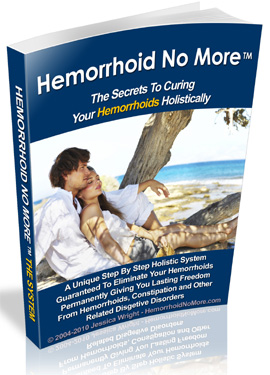
If you have tried "everything" to treat hemorrhoids, including surgery, but it didn’t work—your’re not alone. Jessica Wright experienced this same hardship due to hemorrhoids. But, with extensive research and understanding of natural medicine, she developed a solution to permanently end her hemorrhoids.
Jessica Wright wrote an entire book detailing exactly how to replicate her success. Also, it appears "Jessica Wright" is probably a pen name for a woman—and author—named Linda Allen. Linda suffered from recurrent yeast infections as well, maybe at the same time as she had hemorrhoids. She turned to natural medicine for answers when medical doctors and their solutions could not help.
Jessica’s story is one of severe and chronic hemorrhoids. It involves routine doctor’s visits, prescription medications / creams, significant suffering from hemorrhoids, and even a two hour hemorrhoids surgery (stapled hemorrhoidopexy). Yet, 12 years of these treatments didn’t resolve Jessica’s hemorrhoids.
Despite these setbacks, Jessica didn’t give up; instead, she turned to natural medicine and diligent research. Skipping to the end of Jessica’s story, she would develop a natural method to treat hemorrhoids that worked brilliantly.
After Jessica put together her treatment protocol and used it, she found her hemorrhoids completely disappeared. And, they stayed gone. Something her doctor was not able to do. Yet, all it took was the right natural therapeutic approach.
Jessica also gave her treatment approach to others; and, they experienced the same exceptional results. Typically, Jessica’s system provides dramatic relief of hemorrhoids in just 48 hours. And, the root cause of hemorrhoids is fixed within 30 to 60 days.
A company selling hemorrhoid symptom products does not want their customer base diminished. Consequently, unpatentable natural medicine does not get much attention or publicity.
So, how can you know if Jessica Wright’s claims are legitimate and not a scam? That is a great question. Here are 3 important reasons why Jessica’s book is legitimate:
- It is published by a large U.S. based company (Located in Idaho) known as ClickBank. ClickBank handles all the sales and refunds of many products like Jessica’s. They do business in many countries; and, have been in business for many years.
- ClickBank provides a 60 day, 100% money back guarantee on all their products, Jessica’s book included.
- If you are not satisfied with Jessica’s book you can simply contact ClickBank (they make it very easy) for a full refund.
Jessica’s story is more in-depth than this concise overview. And, there are additional bonuses Jessica provides with her book. If you’d like to find out more about Jessica’s personal story or her hemorrhoid treatment; you can learn more at Jessica Wright’s website.
About the Author
Nick Gross is a natural medicine enthusiast who has been researching and writing about natural medicine since 2008. Nick is primarily a web developer, but also researches and authors written and video content about natural health. Nick has a bachelor’s degree in Management Information Systems from the University of Northern Iowa.
More on Nick GrossImportant Disclosures & Disclaimers
It is important to use the information you find on Herbsey.com in the right way. Also for legal reasons, these disclaimers and disclosures are necessary. For further information about each, feel free to click the link provided to the page on this website that provides more information.
Medical Disclaimer
The information on this website is not a prescription for anyone. This information is for informational or educational purposes only, and is not a substitute for professional medical advice or consultations with healthcare professionals.
Advertisement Disclosure
Some of the links provided on this article and website are affiliate links. If you purchase a product after clicking on these links, Herbsey.com will earn a commission. Herbsey.com promotes various products through advertisement and text links. For more information: Our Advertisements.








